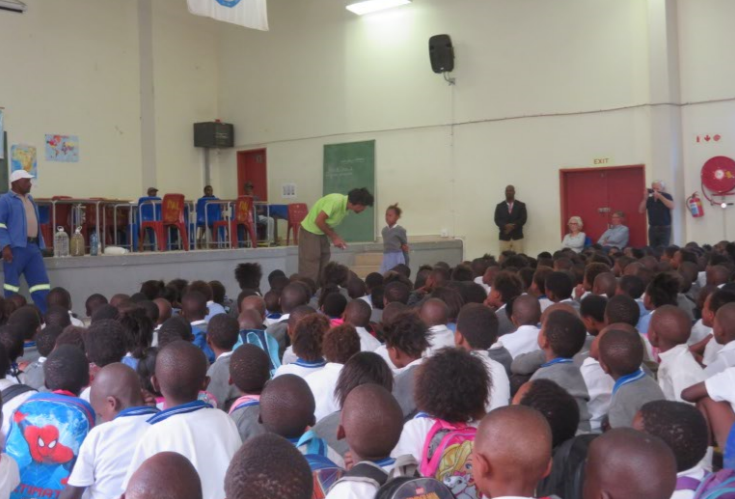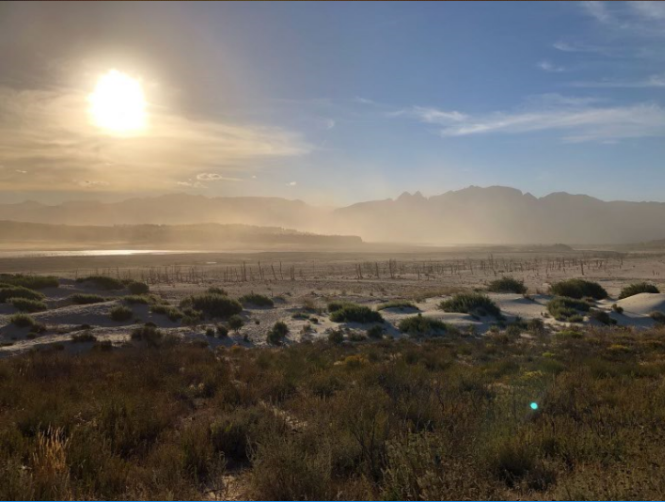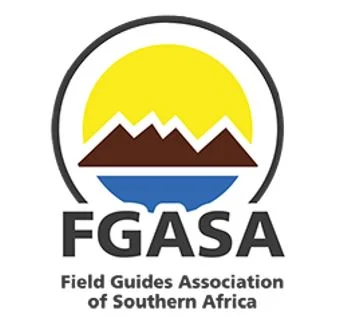On Saturday, 27th of January 2018, Field Guides Association of South Africa had its biannual meeting at Tygerberg Nature Reserve, one of the few surviving pockets that host Swartland Shale Renosterveld.
This event is a great opportunity to network and is a platform for lectures and discussions. The theme for this year’s meeting – Innovation and Courage!
The first guest speakers of the day, were from The President’s Award for Youth Empowerment. They shared how they, as an innovative self-development program, are changing the lives of many youth in South Africa. The Award Programme, works with youth between the ages 14 – 24 year old and is open to working with youth from any of the diverse number of communities within South Africa. The Award Programme offers a progressive programme which includes 3 levels; Bronze, Silver, and Gold. In order to complete each level, participants are required to complete a activities within four main sections; Physical Recreation, Community Service, Skills and Adventurous Journey. With the funding from Athénée Action Humanitaire, in partnership with Cape Winelands Biosphere Reserve, 385 youth in the 2 Year Edu-Link Project have completed their Adventurous Journeys! Being led by FGASA trained guides. The Adventurous journeys have had the youth hike through fynbos rich mountains of Hottentots, Omeitbeerg, Dassenberg Hill, and Mont Rochelle Reserve in Franschhoek, as well as the vast terrain surrounding Springbok in the Northern Cape! Taking part in Adventurous Journey’s, facilitated by FGASA trained guides, has given the youth the opportunity to develop deeper awareness and appreciation of fauna, flora, and animals in their surrounding natural environment. President’s Award Programme in South Africa is an extension of the Scottish The Duke of Edinburgh International Award Programme, founded in the UK in 1953. The Award is currently active in 144 countries, empowering youth of all background, worldwide.
Dynamite comes in small packages and the next guest speaker Matilda Burton, is one! Her extensive knowledge in Culture and History gave way to a deeply inventive presentation about guiding and todays culture. She pinpointed the importance of research in the nature of guiding. A guide is not just a nature guide, but can be a guide of culture, traditions, and heritage to name just a few! Matilda Burton is a professor of the Department of Cultural History at the University of Stellenbosch.
The Guide of the Year Award was presented by Tony Rogers to four exceptional guides who each won in different categories this year. Pieter van Wyk, Pinkey Ngewu, Bevan Thomas, and Jannie Groenwald who have all contributed greatly to their field of work in conservation, sustainability, and youth education.
Pieter Van Wyk, a young wonderfully eccentric man of many talents. Now working at Richtersveld National Park, manages the Nursery, initiated a Desert Botanical Garden, works with youth and elderly, and many more, while continuing to study long distance. And by chance found a new species of spider! His two passions, Taxonomy of Plants and the Nama culture, developed from years exploring the Veld as a child and surrounding himself with family and professionals who share the same interests. He has also written a book, Wild Flower Guide covering 2000 species of plants in Richtersveld and South-Western Namibia, which will be published this year.
Bevan Thomas, a free-range guide, self-employed farmer, and horticulturist has contributed greatly to getting youth out for adventurous environmental education in the best classroom available: the great outdoors! With his contagious enthusiasm teaching youth how we are all connected to nature. He has been involved with Cape Winelands Biosphere Reserve as a guide for TPA hikes and outings and teaches sustainable food production practices with youth.
Pinkey Ngewu, a Level 3 FGASA Guide, currently working at De Hoop Collections as a guide and guide's manager, also a trust manager Dyer Island Conservation since 2015 is heavily involved in environmental education for young children. With her passion for youth education, she aims to create young ambassadors for the environment who will safeguard it with zealousness and produce a generation that will make a difference in the community they are living in.
Jannie Groenwald has selflessly given of himself and his time to help educate FGASA guides over Christmas 2017.
After the colourful presentations by the guides of the year, the guides who have recently completed their Level 1 FGASA Course received their certificates with fervour. All going onto careers within guiding, teaching, and research. In 2017 Athénée Action Humanitaire in partnership with Cape Winelands Biosphere Reserve made it possible for guides to graduate the FGASA program.
Doctor Daniel Cunnama, an outreach astronomer at Cape Town Observatory, founded in 1820, took the stage and figuratively lead the audience on a journey through space explaining gravitational waves - ripples in the fabric of space-time, how this discovery has given birth to a new era in astrophysics. Innovative and courageous!
The meeting closed with the latest news and what will be developing within FGASA in the Western Cape in 2018. Many exciting things!
Don’t miss the next meeting, the first Saturday in June 2018! Keep an eye out for dates and venue. All enthusiastic ambassadors of nature and conservation are welcome!







